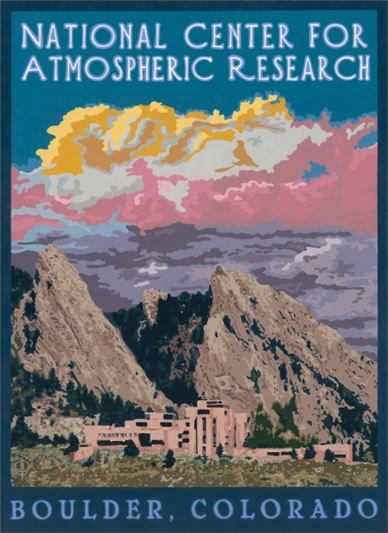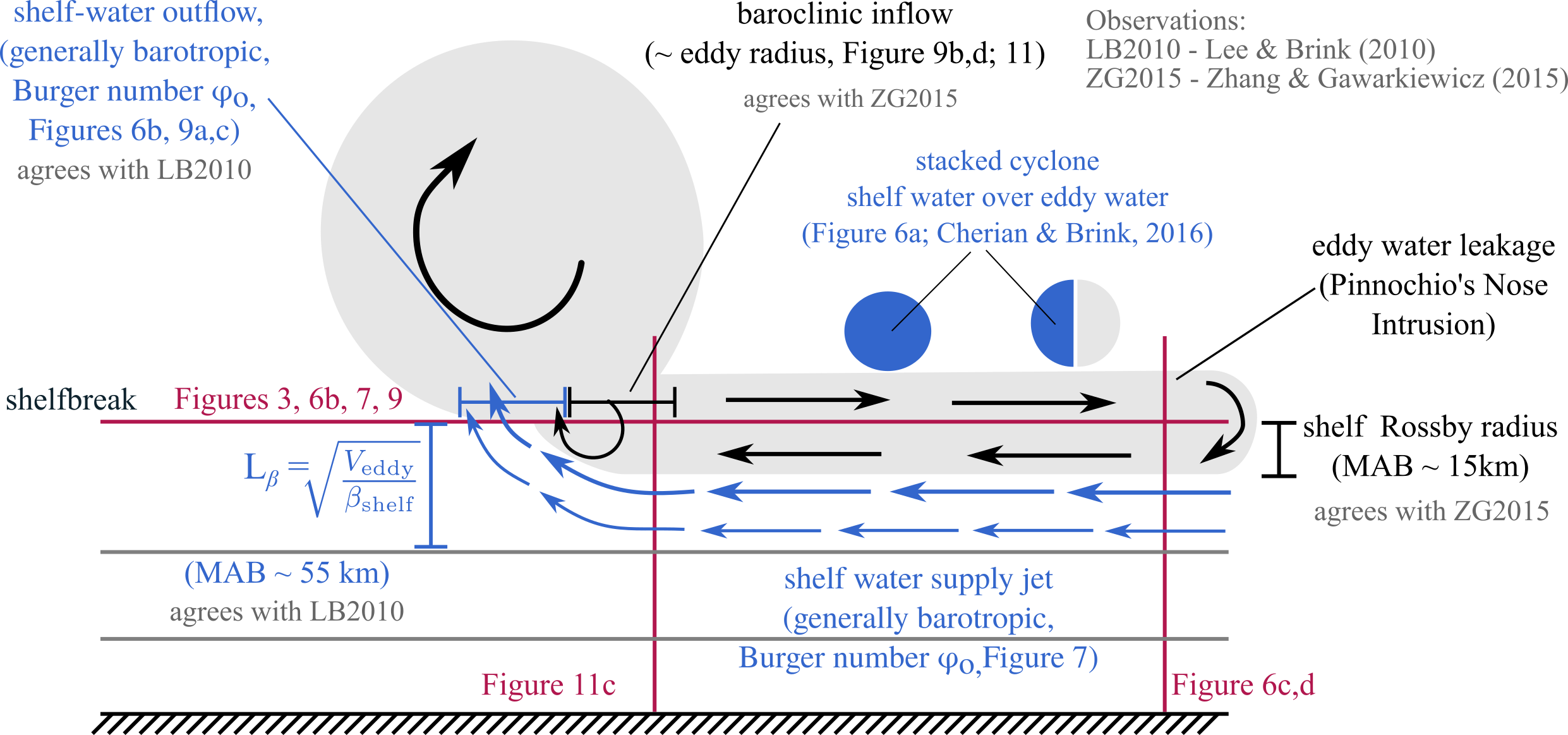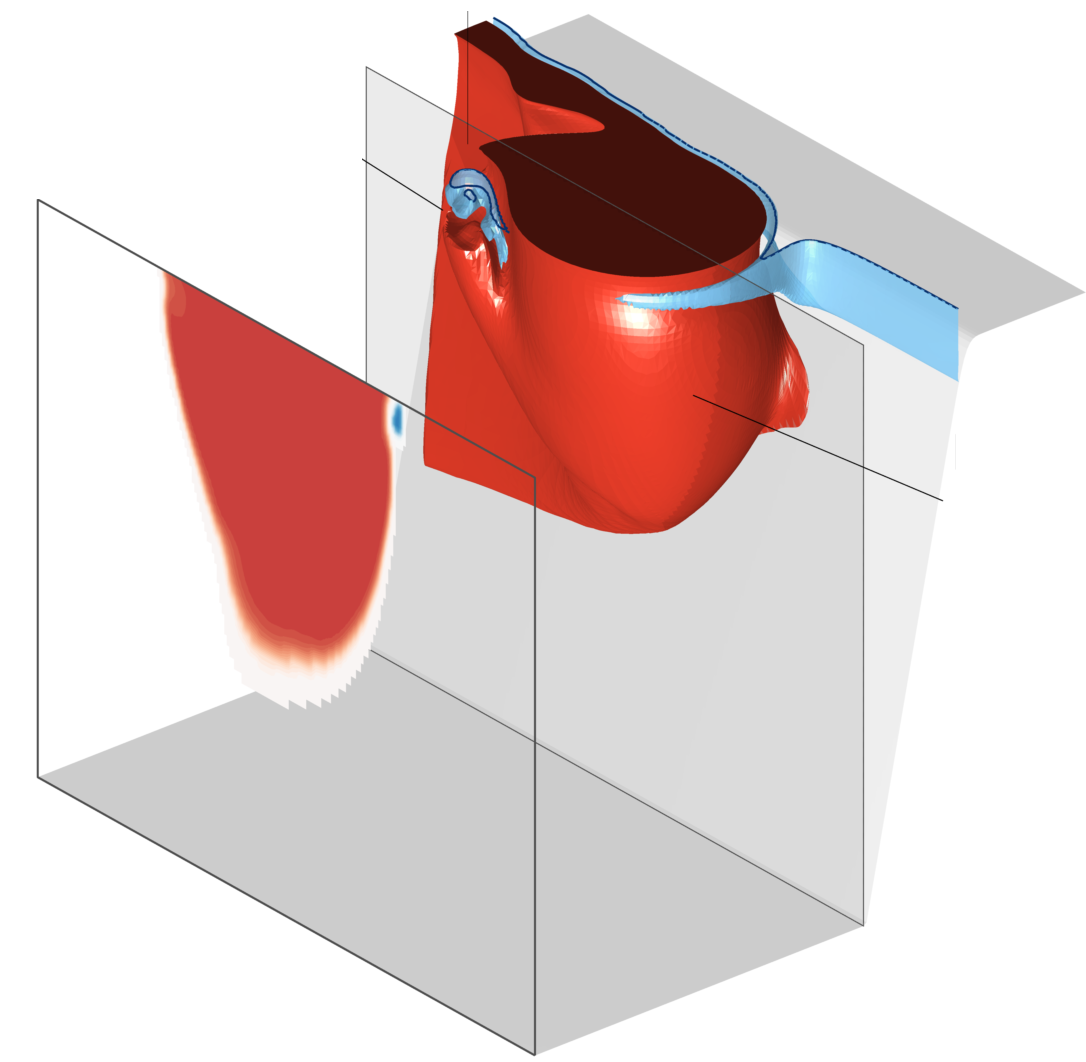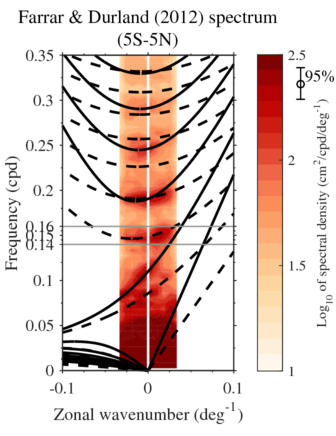Linking microstructure measurements to the mesoscale
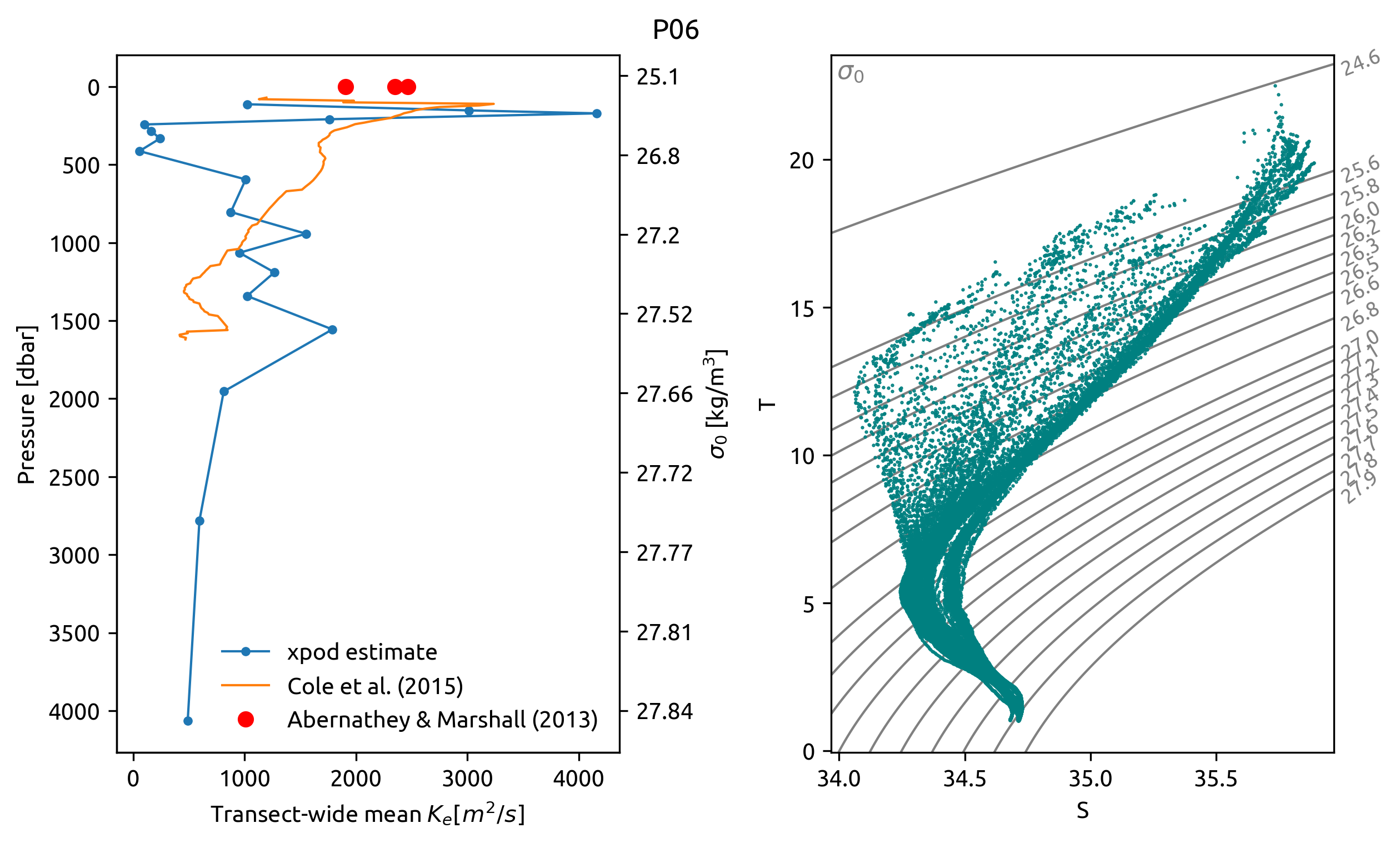
We are working to estimate lateral (mesoscale) diffusivity coefficients from two classes of microstructure measurements: a) moored measurements from the χpod of Moum & Nash (2009), and b) basin-wide GO-SHIP transects from the CTD-χpod (Pickering & Nash, unpublished). We will interpret the χpod measurements using the triple decomposition framework of Garrett (2001). Above [left] is a preliminary estimate for the P06 section at 24°S in the Pacific Ocean. For comparison, we show an estimate based on Argo finestructure (Cole et. al., 2015) as well as an estimate using passive tracers advected by altimetric velocities (Abernathey & Marshall, 2013). [right] Density bins used for the computation are marked on a T-S plot.
